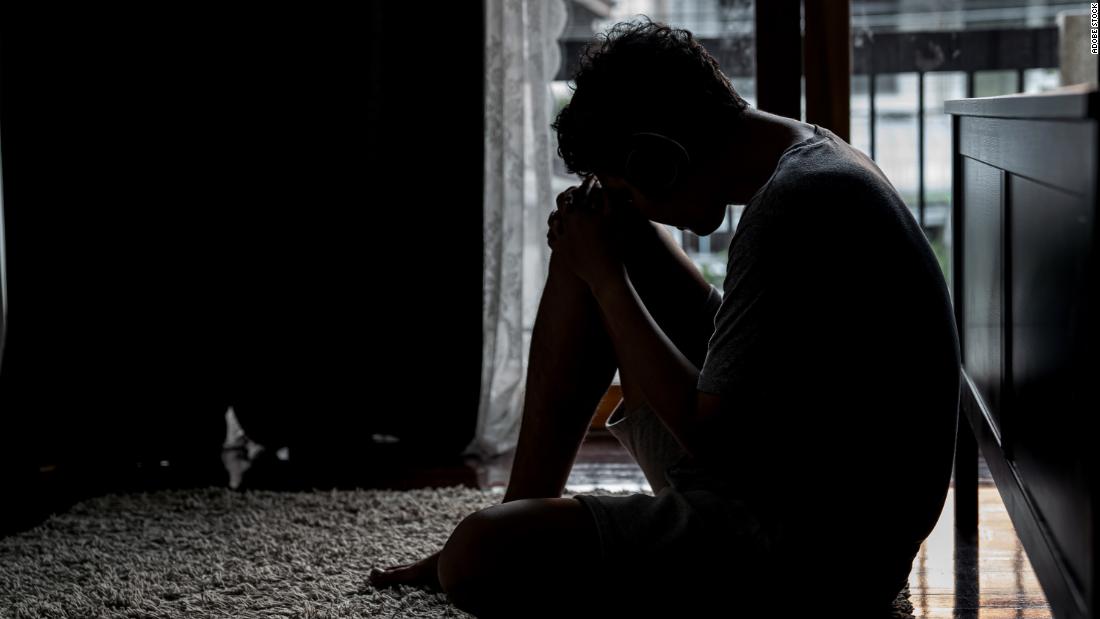Military suicide increases in the US 1:26
(CNN) -
Suicides in the United States decreased 3% from 2019 to 2020, even as overall suicide risk factors rose, according to data released Wednesday by the National Center for Health Statistics, part of the US Centers for Disease Control and Prevention (CDC).
Suicides among men decreased 2% and suicides among women decreased 8%, with the largest drop in non-Hispanic white women.
Suicides in this group fell 10% between 2019 and 2020.
However, not all populations experienced a decline.
What the data reveals
While suicide rates decreased among women of all racial and ethnic groups, only the 10% decline for non-Hispanic white women was statistically significant.
However, suicide rates increased among non-Hispanic black men, non-Hispanic American Indians, and Alaska Natives, and among Hispanic men.
Suicides among Hispanic men increased by a statistically significant 5%, and rates in men ages 25 to 35 also saw a significant increase of 5% from 2019 to 2020.
Suicides of minors in Japan are at a record level
"Suicide is a complex and multifaceted public health problem with social, environmental, interpersonal, biological and psychological components," wrote the researchers affiliated with CDC's Division of Vital Statistics and Division of Analysis and Epidemiology.
advertising
"The covid-19 pandemic increased many of the risk factors associated with suicidal behavior (adverse mental health conditions, substance abuse, and work or financial stress), and young adults and black and Hispanic people were more affected than other demographic groups. "
The disparate impact of pandemic stressors could be part of the reason why declines in suicides were not seen across demographic groups.
"What you see when you look at the different groups is that there are some differences, like the overall number and rate depends on what happens to the majority group - non-Hispanic whites, both male and female," Sally Curtin, member, told CNN. from the NCHS Division of Vital Statistics and lead author of the report.
"I think it is now common knowledge that covid affected different demographics differently and some were affected more than others," he said.
Here's what you can do about increased anxiety and depression from the pandemic
There is still more work to be done
While the decline seen in this report follows a 2% decline in suicide rates from 2018 to 2019, Curtin said it is still necessary to "remain vigilant" about suicide.
"In terms of 2021, of course we have to stay tuned. I mean, this doesn't mean, 'Oh wow,' you know, 'We've arrived' or 'This has been resolved' because historically the number is still pretty high. It was just under 46,000 suicide deaths in 2020. "
"It is lower than 2017, 2018, 2019, but then it is higher than any number before it. So even though it has gone down in recent years, it is, as I said, historically still high," he said.
"As this report shows, some groups continued to rise, and for the most part the groups that had increases were simply continuations of upward trajectories."
World Suicide Prevention Day 2021: How to help
The data presented in the report is provisional, which means it is not the final suicide rates for 2020. Suicide deaths can take months to accurately count because it may take some research to determine how to categorize a death.
The study authors said, in particular, that interim data on suicide in women may lag behind those of men because poisonings take longer to investigate, but comprise a higher proportion of suicides by women than men.
Still, the authors said they expect the 2020 interim findings to "be consistent with the final 2020 data."
Curtin said that in understanding the observed decrease, it is important to remember that risk factors do not always coincide with the increase in suicide rates.
"We know there were more visits to the ER for young women with, you know, self-harm. So there were things that pointed to maybe deaths would increase," she said.
"It's not just a matter of, you know, automatically, 'OK, the risk factors went up. So we can expect this to go up.' It's not that simple with suicide."
How to get help
See here the lines of attention and prevention of suicide in Latin America, the United States and Spain.
If you live in the US and have suicidal thoughts, call the National Suicide Prevention Lifeline at 800-273-8255 (800-273-TALK) for free and confidential support.
It is open 24 hours a day, seven days a week.
For crisis assistance in Spanish, call 888-628-9454.
TrevorLifeline, a suicide prevention counseling service for the LGBTQ community, can be reached at 866-488-7386.
Befrienders Worldwide connects users with the closest emotional support center for the part of the world in which they live.
Crisis Text Line is an international service that provides a live trained crisis advisor via simple text message asking for help.
The first few responses will be automated until they have an advisor on the line, which generally takes less than five minutes.
If you are in the US or Canada, text 741741. If you are in the UK, text 85258 and those in Ireland can text 50808. The National Service of Salud also lists a variety of resources on its website.
Suicide

